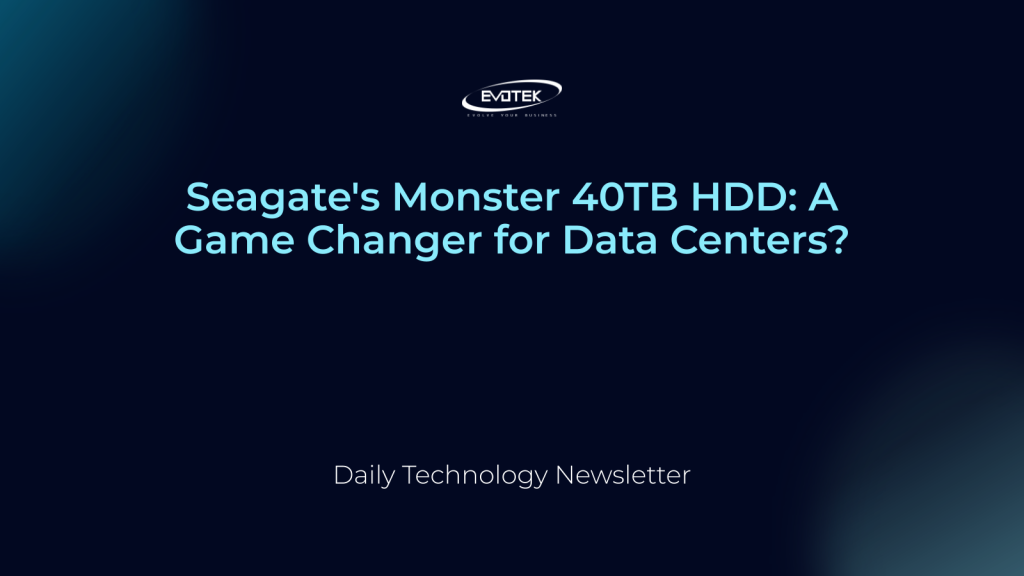Seagate has confirmed shipments of its groundbreaking 40TB hard drives, potentially revolutionizing data storage. But when will this tech reach the masses?
HAMR Technology Unleashes Unprecedented Storage Density
These new drives leverage Heat-Assisted Magnetic Recording (HAMR) technology, achieving an impressive 4TB per platter within a 10-platter configuration. This marks a significant leap forward with Seagate’s Mozaic 4+ platform, promising enhanced storage efficiency for data centers.
Limited Availability, Mass Production on the Horizon
While the 40TB drives are currently in limited distribution for testing and qualification, Seagate anticipates full-scale production in the first half of 2026. Dr. John Morris, Seagate’s CTO, stated the company plans to extensively qualify the product with a broad portion of their customer base before wider release.
Data center integration and validation will be key factors in determining the rollout speed. Seagate aims to transition a substantial portion of its exabyte shipments to these HAMR-based drives, capitalizing on their superior capacity and efficiency.
Future Roadmaps: 44TB and Beyond
Seagate isn’t stopping at 40TB. The company’s roadmap includes 44TB drives by 2027 and 50TB drives by 2028, solidifying its commitment to pushing storage boundaries.
CEO Dr. Dave Mosley highlights the benefits for data centers: “10 disks would get you to 40 terabytes… this gives better efficiencies in the data center. At the fleet level, this is how our customers think.”
The Competition Heats Up
While Seagate leads the charge with early 40TB HAMR shipments, competitors are pursuing alternative strategies. Western Digital (WD) is focusing on ePMR and OptiNAND technologies, with their own 40TB HAMR drive slated for late 2026. Toshiba is also developing Microwave-Assisted Magnetic Recording (MAMR) and plans to release a 35TB HDD based on HAMR before 2026.
Kimihiko Nishio, WD’s sales manager in Japan, notes, “Other companies have started adopting HAMR with 30TB HDDs, but we believe HAMR’s true potential begins at 40TB. Until then, we’ll continue using technologies like OptiNAND and UltraSMR to increase the capacity of existing HDDs up to 40TB.”
Implications for the Future of Data Storage
While not targeted at the average consumer, these high-capacity drives are crucial for AI-driven applications and cybersecurity, where massive datasets demand advanced storage solutions. Seagate’s progress signifies technical advancement, but the journey to widespread adoption presents considerable challenges.
Key Takeaways:
- Seagate ships limited units of 40TB HAMR hard drives.
- Full-scale production targeted for the first half of 2026.
- HAMR technology enables 4TB per platter.
- Competition intensifies with Western Digital and Toshiba pursuing alternative approaches.
- These drives primarily benefit data centers and AI-driven applications.
Learn more about HAMR technology.

 日本語
日本語 한국어
한국어 Tiếng Việt
Tiếng Việt 简体中文
简体中文